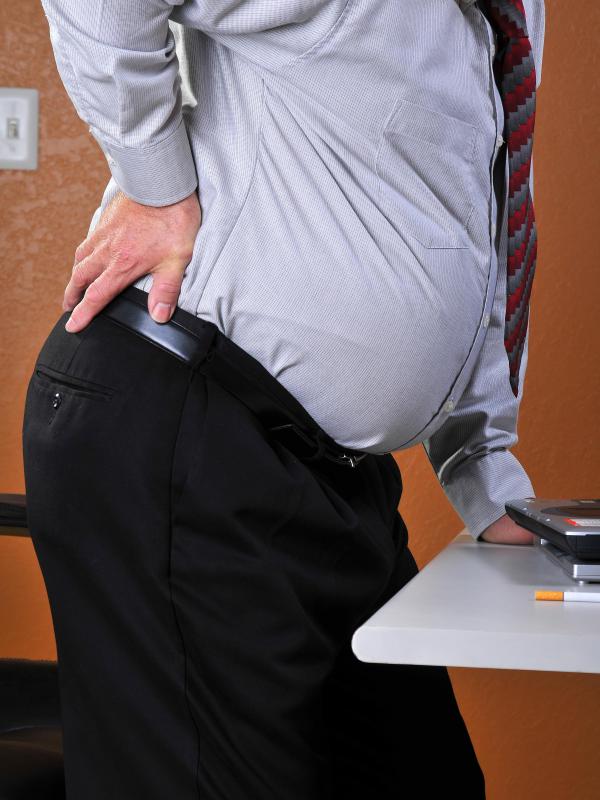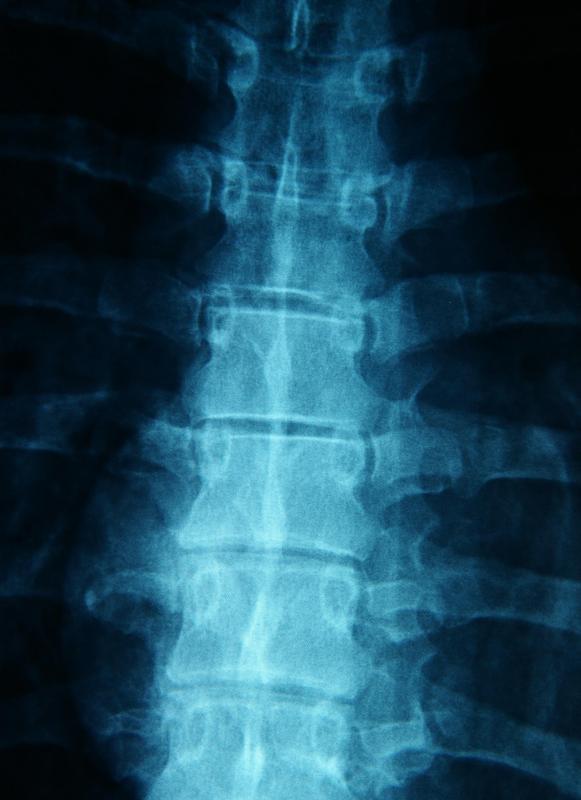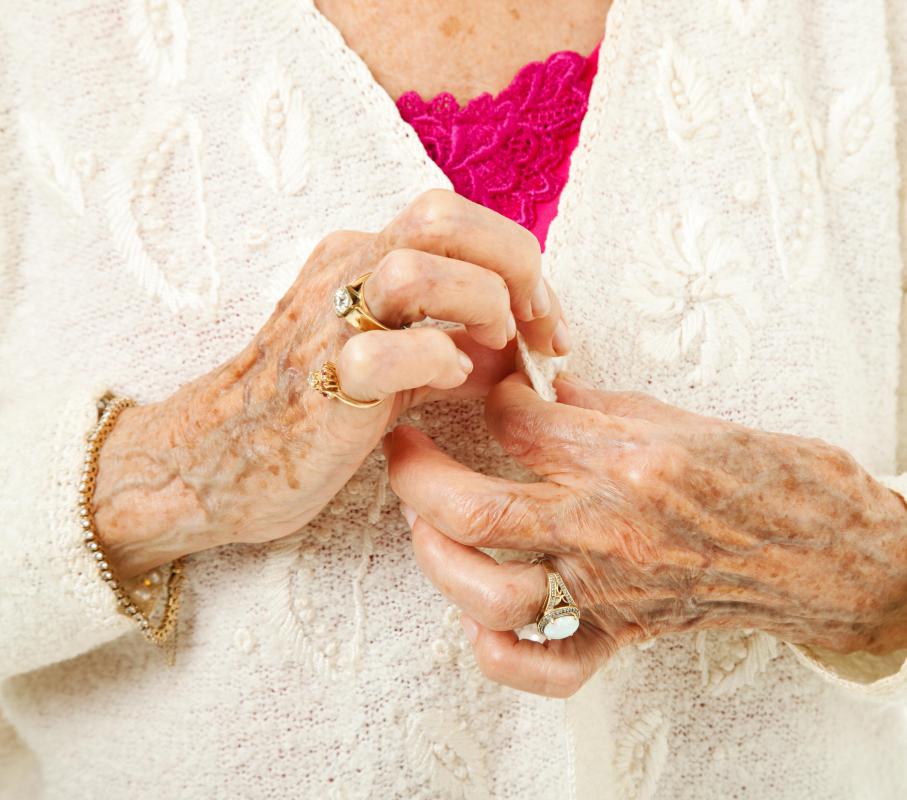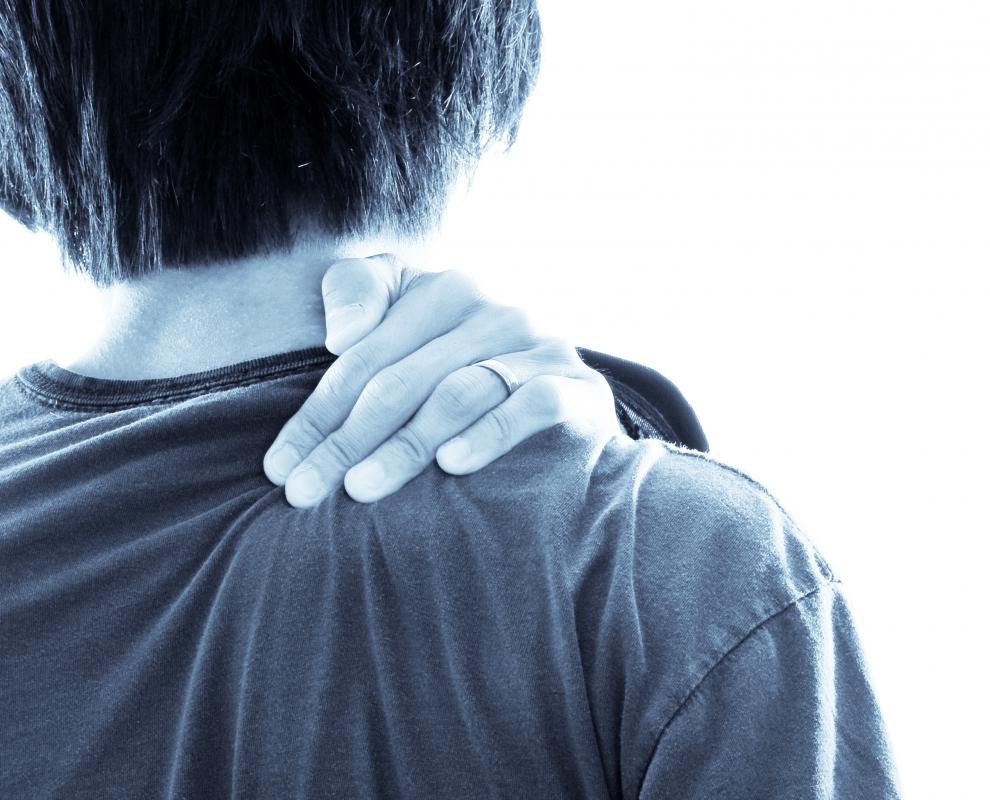At TheHealthBoard, we're committed to delivering accurate, trustworthy information. Our expert-authored content is rigorously fact-checked and sourced from credible authorities. Discover how we uphold the highest standards in providing you with reliable knowledge.
What is a Retrolisthesis? Understanding Spinal Displacement Conditions

The human spine, a marvel of biological engineering, elegantly supports the body's structure with its S-shaped curvature when viewed from the side. This intricate column is segmented into cervical, thoracic, lumbar, and sacral regions, each with a specific alignment. According to Auckland Physiotherapy, the spine's alignment plays a crucial role in our overall health, with even slight deviations potentially causing significant discomfort. One such deviation, retrolisthesis, occurs when a vertebra slips backward in relation to its neighbor. The prevalence of retrolisthesis varies, but a report in the Spine journal indicates it can be found in up to 30% of lumbar spinal segments on MRI scans in certain populations. Understanding what is a retrolisthesis is essential, as early detection and management can help mitigate its impact on quality of life.
The spine follows specific curves in four different regions- cervical, thoracic, sacral, and lumbar. Abnormalities in the curvature can lead to debilitating conditions. One such condition of abnormal curvature is retrolisthesis.

A retrolisthesis is an acute, degenerative, or congenital condition in which a vertebra in the spine becomes displaced and moves backward. In most cases, retrolisthesis occurs when a soft disc that separates and cushions vertebrae either deteriorates or ruptures. Without the support of the disc, the upper vertebra slips out of place and puts pressure on the bone below it. A person who experiences the condition may have a number of symptoms, including chronic back pain, stiffness, and numbness. Treatment depends on the severity of symptoms but usually includes a combination of pain medicines, physical therapy, and surgery.

The incidence of retrolisthesis (in the lumbosacral region) at L5-S1 was found to be 23.2% in a study. As it is a degenerative disc condition, old individuals are more prone to acquiring it. It can occur in the cervical (neck/shoulder), thoracic (stomach), and lumbar (lower back) regions. Thoracic retrolisthesis is relatively uncommon.
Retrolisthesis Vs. Spondylolisthesis

Both these conditions are opposite to one another. Spondylolisthesis refers to a forward slipping of the vertebrae. Retrolisthesis is the backward slipping of a single vertebra. In many cases, the presenting features (low back pain, etc.) are the same; however, treatment modalities are different.
Types of Retrolisthesis
This backward slipping of the vertebra is classified into three different types:
Partial Retrolisthesis
In partial retrolisthesis, only one vertebra displaces backward (compared to a spinal segment above or below it).
Complete Retrolisthesis
One vertebra moves back in reference to the spinal segments above and below it.
Stair-stepped Retrolisthesis
As the name indicates, in this type, a stair-step is formed. The vertebra slips back to the body of the spinal segment above it but is ahead of the segment below it.
Retrolisthesis Severity Grade
The following grading is used to explain the severity of the disease:
Grade 1
Posterior displacement of the vertebra is up to 25% (mild degree). It is generally stable.
Grade 2
Posterior displacement of the vertebra is between 25 and 50% (moderate degree). It can cause mild symptoms.
Grade 3
Posterior displacement of the vertebra is between 50 and 75% (severe degree). It causes symptoms but can be managed non-surgically.
Grade 4
Posterior displacement of the vertebra is between 75 and 100% (extreme degree). It poses significant instability of joints and may require surgery for correction.
Causes of Retrolisthesis

Most instances of vertebral slippage involve a forward movement of an upper vertebra, in which it slips inward toward the chest. The backward displacement involved with retrolisthesis is less common, but still occurs in considerable frequency among people with degenerative disorders. Arthritis is a leading cause of retrolisthesis in older people, which leads to deterioration of disc tissue. Research has found a link between degenerative conditions (such as arthritis) and retrolisthesis. Severe back injuries and congenital spine defects can also result in vertebral slippage.

Retrolisthesis can occur due to birth defects of the spine. Spina bifida is a congenital disability of the spine that is mainly linked to spondylolisthesis. However, a case study revealed severe retrolisthesis in a 3-year-old boy with spina bifida. It can also develop as a congenital defect of the spine.
Traumatic retrolisthesis (due to trauma or injury) is rare, but 4 cases of lumbosacral vertebral displacement have been reported. A 22-year-old boy also presented with retrolisthesis and lower extremity weakness after falling from 8 meters in height.
The traumatic retrolisthesis was present in the L5 vertebra. Sports and gymnastics injuries may also lead to the development of retrolisthesis.
Weak core muscles of the back and the abdomen can contribute to retrolisthesis. Thin and weak abdominal muscles were observed in a kyphotic 59-year-old man. CT scans and MRIs showed retrolisthesis in L3-L4 regions. That indicates that weak muscles have a link with retrolisthesis.
Cervical Retrolisthesis
Retrolisthesis is most likely to affect a bone in the uppermost section of the spine, called the cervical region. Cervical vertebrae in the neck are smaller and generally more susceptible to injury. Slippages are possible, but less common, in the middle and lower sections of the spine. The location of the displacement largely determines the types of symptoms a person might experience.
As per studies, the intensity of disc degeneration by retrolisthesis is lesser when compared to spondylolisthesis. Therefore, symptoms of retrolisthesis are generally not that severe.
Cervical retrolisthesis can lead to chronic dull neck pain and tenderness.
Patients have also reported limited range of motion and uneasiness in the upper back. Retrolisthesis accounted for 9.1% of cases with radiating neck pain.
Lumbar Retrolisthesis
Slippages lower in the back can significantly limit mobility, causing stiffness and constant pain when walking, standing, or sitting. It is possible for a damaged vertebra to put pressure on important nerves in the back, leading to numbness or tingling sensations in the arms, legs, or torso. Symptoms tend to worsen over time without treatment, especially when degenerative disorders are responsible.
According to a study, lumbar retrolisthesis is linked to impaired back function and low back pain. Lumbar to sacral retrolisthesis can also cause low back pain and dysfunction in patients with disc herniation. According to a study, old age patients with lumbar retrolisthesis and thoracolumbar kyphosis have low spinal stability and pronounced symptoms.
Diagnosing Retrolisthesis
An individual who has significant back pain should visit his or her doctor for a thorough evaluation. A physician can physically examine the spine and take x-rays to check for retrolisthesis. MRI and CT scans may also be used to get a clearer picture of the neighboring soft tissue. If a slippage is found, the doctor may refer the patient to a specialist for a more thorough assessment. Additional diagnostic tests at the spine specialist's office help to determine the most appropriate course of treatment.
Treatment Options for Retrolisthesis
A slight displacement does not often require surgery. Instead, a patient is usually given medications to manage pain and swelling and instructed to get plenty of rest for several weeks. If arthritis is involved, he or she may need to take additional drugs and supplements to improve bone health. Physical therapy shows promising results. As per a study, physiotherapy reduces pain and symptoms of retrolisthesis.
As weak muscles can aggravate the symptoms, massage therapy (myofascial release massage) can also help regain muscle strength and improve symptoms. Massage therapy and spinal rehabilitation programs can improve the quality of life of spine patients. Your physical therapist may teach you the different exercise techniques to relieve pain, improve mobility, and strengthen core muscles.
A case of severe retrolisthesis can usually be remedied through an invasive surgical procedure, during which a specialist manually adjusts the alignment of vertebrae and permanently fuses them together. Follow-up physical therapy, which can take years, is important to help a patient regain strength.
AS FEATURED ON:
AS FEATURED ON:















Discussion Comments
I'm a 61 year old woman with arthritis and severe cervical issues as well as sciatica and lumbar pain.
The reason for my post is that I have had 3 cervical fusion surgeries since 2003. First it was C5 through T1, and after falling and landing face first in 2007, (on cheekbone), I had to have C4-5 fused. Both of these were through the Front so they removed the initial plate and screws and replaced with a smaller one between C4 and 5.
I was then rear ended which required fusion surgery in 2010 using the posterior approach using rods and screws for a "markedly unstable" C3-4. Rods cover C3 to C5. I have been dealing with the pain and with a very understanding husband have been able to "live" where almost no one would know that I had "anything" wrong with me.
I have recently started have extreme pain up the left side of my neck and into the left side of the base of my scull. It is like someone stabbing me with a hot poker both inside my ear and up into my head. It stops me in my tracks and seems to hit without warning, but appears to happen whenever I move my head even slightly from looking a little downward to the side to straight ahead. It is happening enough that people stop and stair when I suddenly stop as I find it impossible to ignore.
The last time I saw a doctor and he had a spect scan done in Jan 2016, I was said to be stable with minimal retrolisthesis at C3 on C4 and anterolisthesis at T1 through T3.
I am feeling like I should be talking to someone about the sudden change in the pain as well as what causes it, but at the same time, I feel like the doctors are stumped and figure there is nothing they can do and I am just going to have to deal with the pain .
Should this sudden change be something important enough to "bother" the doctors, or would it just be considered something to put up with because it will not get any better?
I have had tingling up and down my spine and leg for two months now, after I fell and had a double fracture of left arm. It has felt like I have been sitting on a motor boat with reverberations up and down the spine and legs. I just started Lyrica and today is the first day on the job that I wasn't totally distracted from these feelings. I will continue this medication along with prayer and I have hope it will get better. Just wanted you to know there could be some help for you too. Stay close to the Lord and he will give you the strength to get you through.
I am curious, I have retrolisthesis in L3, L4, L5 and C5-C6---it is still a new diagnosis, and they are also testing for autoimmune diseases (which is how they found this) I am young (44) and was very active prior to a few weeks ago. Now I'm in tons of pain, have limited mobility, but how am I going to be able to go back to work, office job, and resume my normal activities? The doctors aren't really saying because I know they don't have a definite diagnosis, but no one will level with me.
I was diagnosed with retrolisthesis in L4-S1. The doctor wanted to give my spinal cortisone injections which I refused. He gave me muscle relaxers and pain killers for the pain.
Through my work, I have seen too many patients become addicted to pain killers and muscle relaxers, so I didn't want to go that route, either. I got a prescription to see a physical therapist for six weeks, three times a week. I can't speak for everyone, but just in my own experience, working with the physical therapist and doing the stretches at home like he showed me in his office has helped me tremendously.
Here I am five weeks after I started with PT, and I have more movement and less pain. I've read the posts on here and for those of you who are still suffering, my heart goes out to you, and I will continue to pray that each of you get released from the pain.
@anon145364: I literally feel your pain. I envy old people who can still go for a walk. I feel just like you. Night and day, it never ends. It seems the door keeps closing more and more on my life so that it is almost shut.
But please don't think we were born to suffer. That would mean God is cruel and we have no hope of anything better. We do.
I had a neck x-ray and the result was 3mm retrolisthesis of C4 and C5 that reduces somewhat on flexion but is maintained on extension. What does it really mean?
@anon195453: Sitting can and will aggravate it as will your posture. A lot of articles online encourage physio therapy and chiropractic sessions to alleviate any subluxation, etc. I recommend seeing either before doing any stretches. I learned this the hard way! They can tell you what stretches are bad and good and I tell you it is worth knowing.
I'm a 24 year old female, and was reasonably fit and active until muscle spasms turned into a hernia sciatica and retrolithesis L5.
The first doctor was well aware I was having to travel internationally and ignored me when I asked if there was any stretches etc I could do and just prescribed a strong nsaid.
Once I got to Tokyo everything was fine until I lost the ability to walk and go to the bathroom. I didn't tell the specialist or doctors in Japan for fear of being operated on in a foreign country.
It took me nine weeks before I was able to fly back home. All of the medical professionals I have seen seem to contradict each other so have given up!
Chiropractic manipulations seem to help with the retrolithesis and sciatica, very basic stretching and as much walking I can do helps. Also, a lumbar roll and seat cushion which tilts and is cut out at the back for the spine helps when I drive or have to sit anywhere.
I count myself lucky I can go to the bathroom again but it's a daily burden which cuts your standard of life in half. I don't think anyone can understand the amount of frustration, pain and isolation a serious back issue causes unless they've experienced it for themselves! Good luck to all of you!
I know how you all feel with the pain. I have too many problems to list that pain meds no longer provide much relief for, however, I wanted to suggest lidoderm patches. They will numb the area your pain is in. I use them on for about 16 hours on even though it says to only use them for 12 on 12 off and have used up to three at once. I try to only use them when the pain is more severe than normal because they are so expensive. Usually they have samples in the doctor's office.
They cost about $8.50 a patch at walmart and you can get a coupon from the manufacturer. Wishing you all to wellness. I know how it feels and wish to go home too. The pain is horrible and indescribable.
I have a question. I have a 3.5 mm rethrolisthesis at l3 as compared to L4. The spine specialist cannot get me in for two weeks. I have some sciatica, but with enough ibuprofin I'm okay.
However, I'm terrified that I'm going to make the slippage worse. It hurts to sit. I'm fine standing, walking or lying down, so that's all I've been doing for a few weeks. How likely is it that sitting in a chair (or car!) would make the slippage worse. Does anyone know?
Wow - you two - so sorry you have so much pain. I thought mine was bad but at least I can still work full time. I guess I'm relatively lucky despite 2mm retrolisthesis of C5-6 with mild foraminal narrowing and severe degenerative disc disease with osteophytes along with thoracic degenerative disc disease, a mid thoracic syrinx with central syringomyelia, osteoarthritis (arthritis)and Schmorl's nodes throughout the thoracic spine down to L1. I also have arthritis in the lumbar spine and fibromyalgia.
I am taking 100 mg Nortriptyline and slow release Ralivia (Tramadol) at night to help with sleep and pain but the pain is increasing lately and I am going to see my doctor next week to discuss what I can do next. I can identify with your wish to "go home". I often say that to my husband because life is so painful and tiring. I get so exhausted at times that I can hardly breath.
I guess we have to get what little pleasure we can from life and keep smiling through our pain. No one likes a constant complainer after all, hard though it is not to complain. Good wishes to you both.
I also have fibro, frozen shoulder and all over body pain and a grade 1 of the c3 and c4 which I'm in constant pain from head to toe. no one helps, no meds help.
I know what you mean 127931 -- it is no life. I always pray that God takes me home. I cannot tolerate all the different pain. I also use ice and heat, meds. We were just born to suffer!
i have this along with herniated disks in my neck. also three fractures in the mid thoracic, plus three herniated disks in mid back and one on the nerve root and four bulging into the lumbar with spondylotic changes and stenosis.
It is constant, severe crippling pain, which is everywhere in my whole body. Plus fibro and severe joint, bone muscle, and nerve pain. it feels like i was hit by a truck and run over a thousand times.
I am bedridden most of time with heat packs or ice packs. I can hardly walk, lift up my arms and sit or stand for about 15 min. Medicine only helps at certain times, but the pain always wins. i can be lying still and pain shoots all over my body. it is a terrible way to live. No life at all.
Post your comments